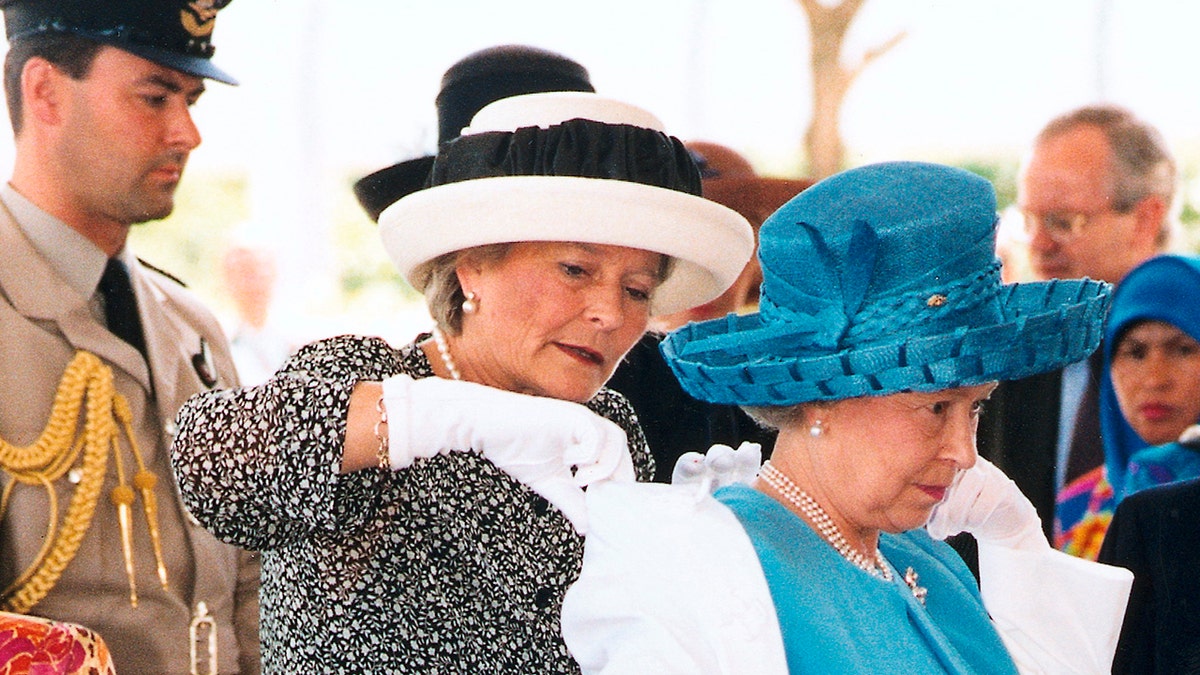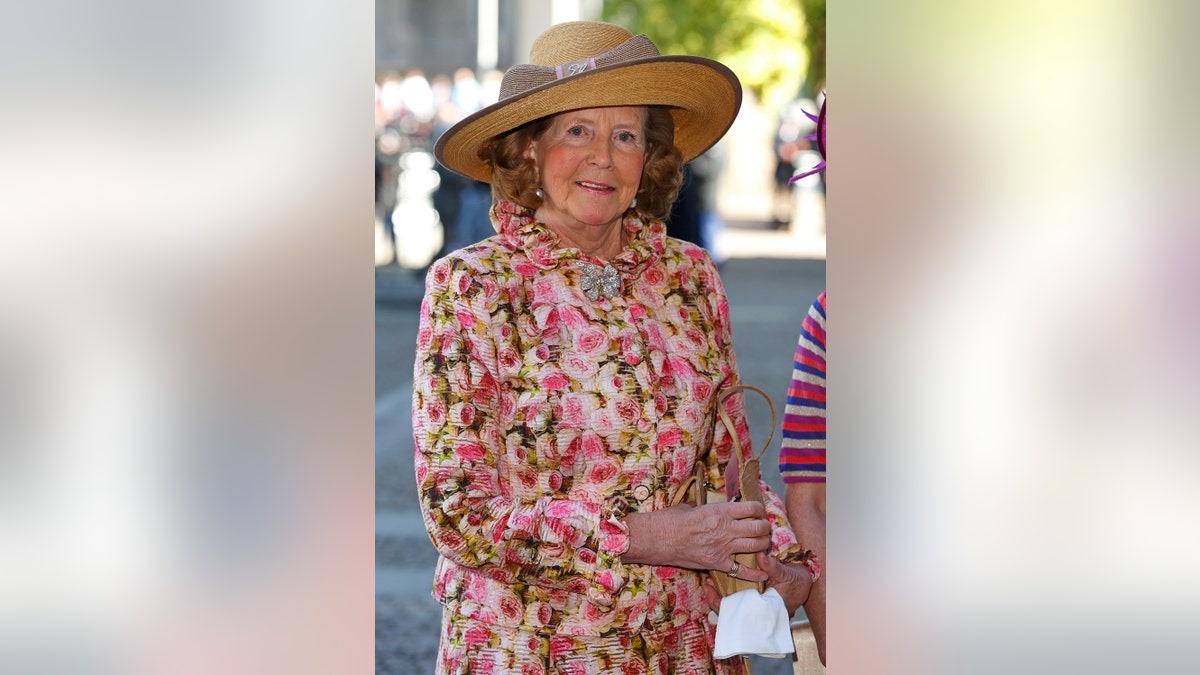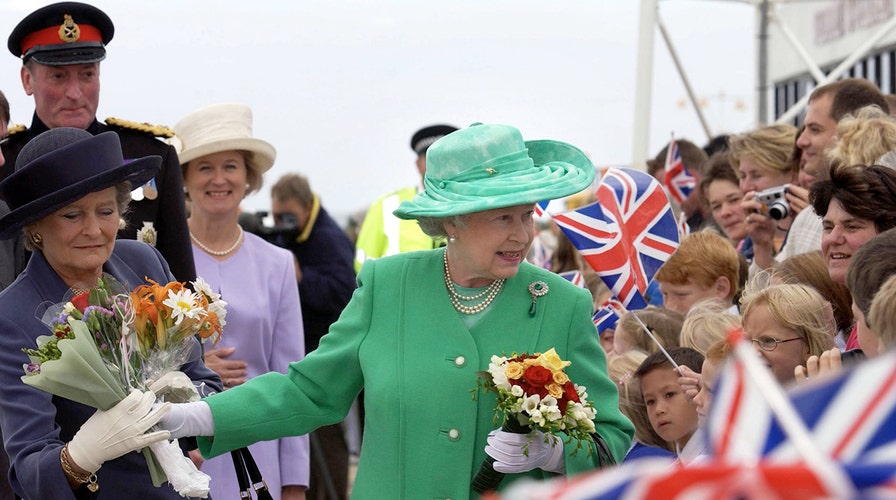Fox News Flash top entertainment headlines of the week
Fox News Flash top entertainment and celebrity headlines are here. Check out what clicked this week in entertainment.
Queen Elizabeth II’s recent loss has reminded the world how important her closest confidantes truly are.
Her longstanding lady-in-waiting Lady Farnham died on Dec. 29, the U.K.’s Telegraph reported. The 90-year-old had been the reigning monarch’s Lady of the Bedchamber since 1987 and traveled alongside her on the way to the Diamond Jubilee in 2012 after Prince Philip was hospitalized.
Lady Farnham’s death follows the passing of the Duchess of Grafton. The outlet noted that the queen’s Mistress of the Robes served from 1967 until her death on Dec. 3 at age 101.
Lady Farnham was born Diana Marion Gunnis. She married Lord Farnham in 1959 and they adopted two daughters. She had four grandchildren.

Queen Elizabeth II (right) with her lady-in-waiting, Lady Farnham. (Photo by Tim Graham Photo Library via Getty Images)
The outlet shared that Elizabeth, 95, will continue to be assisted on official duties by several long-serving ladies-in-waiting. They include Lady Susan Hussey, 82, who traveled with her in the car to Philip’s funeral last April, as well as Dame Mary Morrison, 85, who has been Woman of the Bedchamber since 1960.
But what is exactly a lady-in-waiting? Historically, the title is given to a noblewoman who has a lesser ranking than the royal she is serving. However, she is a beloved friend and ensures all duties are fulfilled out of personal loyalty.
Anne Glenconner, who served as a lady-in-waiting for Elizabeth’s younger sister Princess Margaret, told Fox News in 2020 that the royal personally selected longtime friends for the prestigious role.
"My family has always been a part of the royal household," the 89-year-old explained. "My mother was lady-in-waiting to the queen. My father worked for the Duke of York before he became king. Growing up, I used to play with Princess Margaret. In the summers, we would bathe in the sea. So we’ve always known each other."
CLICK HERE TO SIGN UP FOR THE ENTERTAINMENT NEWSLETTER

Lady Anne Glenconner, one of Queen Elizabeth II's Maids on Honour at her coronation in 1953, also served as a lady-in-waiting for Princess Margaret. (Photo by Max Mumby/Indigo/Getty Images)
"Margaret chose people she could confide in to be part of her circle," Glenconner continued. "We would help Margaret with anything she needed. And Margaret supported many charities, so there was always something to do… But it wasn’t always work. We would connect, laugh and talk. Being a lady-in-waiting is being between a friend and duty really."
The role of a lady-in-waiting is not a paid position. The job, which is reportedly a lifetime one, is meant to represent loyalty and friendship. It’s also noted that the women often come from wealthy families. Some have also been a part of the monarch’s circle for years. The queen may pay for certain expenses, such as clothing and travel.
As for the specific roles, they vary. The Mistress of the Robes, often a duchess, is responsible for the schedule and duties of her fellow ladies-in-waiting. She also handles the regent’s clothes and jewelry. While the Woman of the Bedchamber is on hand to help with decisions concerning social engagements, Ladies of the Bedchamber are readily available for events. They work on a more rotating basis.
Regardless of the title, all the women work together to ensure the royal is provided companionship, support and wise counsel. They assist in day-to-day tasks and ensure all correspondences are organized. They don’t live in Buckingham Palace but could sometimes stay there should their duty require it.
CLICK HERE TO GET THE FOX NEWS APP

Princess Diana with her lady-in-waiting, Anne Beckwith-Smith. (Photo by Tim Graham Photo Library via Getty Images)
"I never found [Princess Margaret] to be difficult," Glenconner explained. "She simply wanted to do her work as smoothly as possible. There have been rumors about how difficult she was - rumors that I wanted to put to rest. Because she really was a wonderful friend. The press also depicted her as this party girl… But there was also a much more serious side to her that the press didn’t write about. Perhaps that story wasn’t as interesting. But I got fed up with those narratives because they didn't really know my friend."
Glenconner also revealed that she received plenty of advice from her friend over the years.

Catherine, Duchess of Cambridge (left) with Lady Susan Hussey (lady-in-waiting to Queen Elizabeth II and Godmother to Prince William, Duke of Cambridge). (Photo by Indigo/Getty Images)
"She never thought there was any sense in worrying about things," she said. "Her advice was always, ‘Do the best that you can. But if it doesn’t work out the way you think, don’t complain. Just get on with it.’ I believe that’s how she lived her life. There was no sense in worrying over the things you can’t control."






















